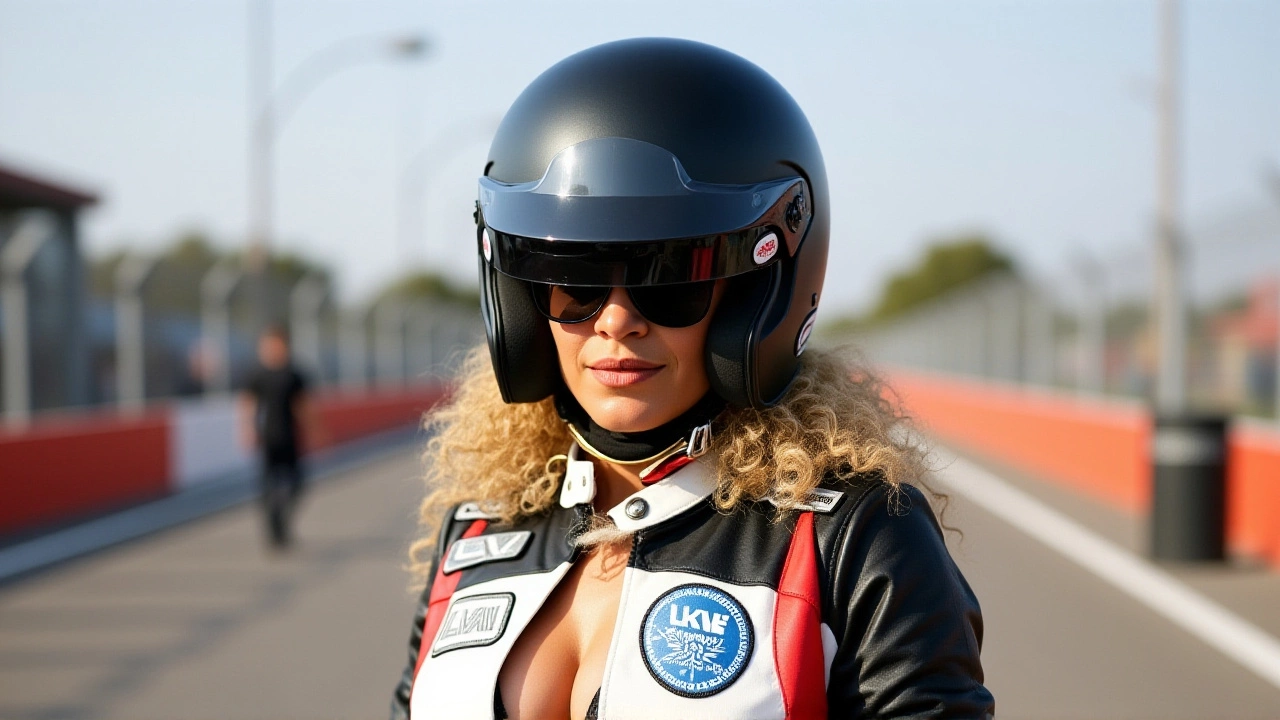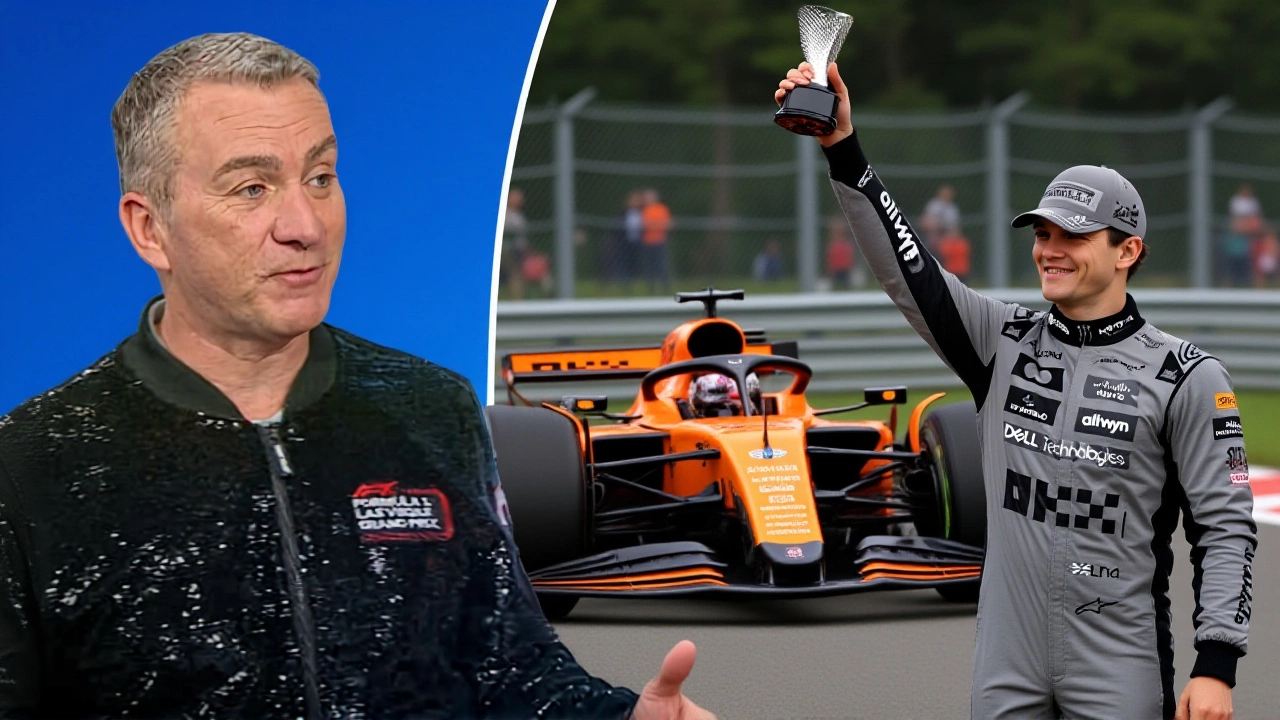Max Verstappen crossed the finish line at the 2025 Heineken Las Vegas Grand PrixLas Vegas Strip Circuit on November 22, 2025, not just as the winner—but as the architect of one of Formula 1’s most chaotic finales in recent memory. The Dutch driver, behind the wheel of Oracle Red Bull Racing, claimed his eighth career U.S. victory with a commanding 20.741-second margin over George Russell, but the real story unfolded hours after the checkered flag: both McLaren Formula 1 Team drivers, Lando Norris and Oscar Piastri, were disqualified for a technical breach that sent shockwaves through the paddock. The disqualification, confirmed by Formula1.com as a "skid wear infringement," didn’t just alter the podium—it rewrote the championship narrative with three races left in the season.
How a Skid Wear Infraction Changed Everything
The rules around skid blocks—those wear-resistant plates under the car’s floor—are among the most technical in F1. They’re designed to prevent teams from running the car too low, which creates illegal aerodynamic advantage. The McLaren Formula 1 Team cars, which had dominated qualifying with Norris on pole, were found to have worn their skid blocks beyond the 10mm minimum thickness allowed. The infringement wasn’t visible during the race; it was detected during post-race scrutineering. "It’s not about speed," said one senior FIA technical delegate who spoke anonymously. "It’s about fairness. If you’re gaining downforce by riding lower than allowed, you’re breaking the spirit of the regulations."
The fallout was immediate. Norris, who led the Drivers’ Championship with 390 points entering the race, dropped to 366. Piastri, his teammate, fell from 366 to 341. Verstappen, who started the weekend third in the standings with 341 points, vaulted to 366 himself—tying Piastri and cutting Norris’s lead to just 24 points. "It’s not just about losing points," said former F1 engineer and analyst Sarah Kershaw. "It’s about momentum. McLaren had the car, the strategy, the confidence. Now they’re scrambling."
The Podium That Wasn’t
George Russell of Mercedes-AMG Petronas Formula One Team was elevated to second, finishing +23.546 seconds behind Verstappen. But the real surprise was Kimi Antonelli, the 18-year-old Italian rookie. He’d started 17th after a false start penalty in qualifying, clawed his way up to fifth during the race, and was initially classified third. Only after the McLaren disqualifications did he move to the podium—though his official time still carried a five-second penalty for that early-race error. "He was driving like a veteran," said Mercedes-AMG Petronas Formula One Team team principal Toto Wolff. "That podium? It’s not luck. It’s talent with a side of resilience."
Charles Leclerc finished fourth for Scuderia Ferrari, while Carlos Sainz of Williams Racing took fifth. Lewis Hamilton, in his 325th F1 start, finished eighth—still searching for his first podium since 2023. The race itself was surprisingly smooth, with Verstappen taking the lead on Lap 1 after Norris made a rare mistake exiting Turn 3. "It was one of the most straightforward wins of his season," noted The Race. "No drama, no tire wars, no late-race pressure. Just pure dominance."
A First in F1 History
The disqualification of both McLaren drivers marked the first time in Formula 1’s 75-year history that both cars from a single team were stripped of their finishing positions in a Grand Prix. The only other instance this season was at the Chinese Grand Prix, where two drivers from another team were disqualified for similar reasons. "This isn’t a coincidence," said F1 historian David Tremayne. "It’s a sign that the FIA is cracking down harder on aero loopholes. Teams thought they could push the limits. Now they know the penalty isn’t just a fine—it’s a DQ."
The incident also raised questions about McLaren’s engineering process. Had they misread the regulations? Was it a calculation error? Or was there pressure to squeeze every last tenth from the car after securing the Constructors’ Championship in Singapore? "They won the title," said former McLaren engineer Alan Jones. "But winning the title doesn’t mean you stop competing. And that’s when you make mistakes."

What Happened on the Track—and Off It
The weekend wasn’t just about the race. During the second free practice session on November 22, a loose drain cover near Turn 1 forced two red flags, delaying the session and rattling drivers. "It felt like we were racing on a movie set," said Antonio Giovinazzi, who wasn’t even in the race. "The track’s brilliant, but the infrastructure? Still a work in progress."
Meanwhile, the Grand Prix Plaza—the event’s fan zone—closed for the season, promising a revamped layout for 2026, including a new karting track and an upgraded 4D theater. The $2,250 Main Grandstand Package included a pit lane walk with Mickey Mouse, a nod to Disney’s sponsorship deal. "It’s F1 meets Disneyland," said fan Sarah Chen from Chicago. "I came for the racing. I stayed for the hats."
What’s Next for the Championship?
With three races remaining—Mexico City, São Paulo, and Abu Dhabi—the Drivers’ Championship is now a three-way battle. Norris leads with 390, Verstappen and Piastri are tied at 366, and Russell sits fourth with 352. Verstappen’s win in Las Vegas wasn’t just about points—it was a statement. He’s now won eight of the last 12 races. He’s on a streak of eight consecutive podiums. And he’s just one win away from tying his own record for most wins in a single season.
McLaren, meanwhile, faces internal review. Will they challenge the disqualification? The FIA has 14 days to hear appeals. But sources suggest they won’t. "The evidence was clear," said one insider. "They’d have lost anyway. And the PR hit? That’s worse than the points."

Why This Matters
This isn’t just about who wins a race. It’s about the integrity of the sport. Formula 1 has spent years balancing spectacle with regulation. Las Vegas 2025 showed that when teams push too far, the system still works. Verstappen didn’t need drama to win. He just needed to be faster. And sometimes, that’s enough.
Frequently Asked Questions
What exactly is a skid wear infringement in Formula 1?
A skid wear infringement occurs when the carbon-fiber skid blocks under a car’s floor wear down beyond the 10mm minimum thickness set by FIA regulations. These blocks prevent the car from running too low to the ground, which would generate illegal aerodynamic downforce. Teams must submit their skid blocks for inspection after every race, and any violation results in disqualification, as happened with McLaren in Las Vegas.
How did the disqualification affect the Drivers’ Championship standings?
Before the race, Lando Norris led with 390 points, 24 ahead of Oscar Piastri and 49 ahead of Max Verstappen. After disqualification, Norris and Piastri each lost 24 points, dropping to 366. Verstappen gained 25 points for the win, tying Piastri at 366 and cutting Norris’s lead to just 24 points—with three races left. The title fight became a three-way battle instead of a McLaren vs. everyone showdown.
Why was Kimi Antonelli on the podium despite a five-second penalty?
Antonelli received a five-second penalty for a false start in qualifying, which originally dropped him to 17th. During the race, he climbed to fifth on track. After McLaren’s disqualification, he moved into third place. The penalty was still applied to his official race time, meaning his final time included the five seconds—but since the drivers ahead were disqualified, he still earned the podium finish.
Is this the first time both drivers from a team have been disqualified in F1 history?
Yes. While teams have had both drivers retire or be penalized before, this was the first time in 75 years of Formula 1 that both cars from a single team were disqualified from a Grand Prix for a technical infringement. The only other double DQ this season occurred at the Chinese Grand Prix, but that was a different team and different violation.
What does this mean for McLaren’s future in 2026?
McLaren’s engineering team is under intense scrutiny. The disqualification suggests either a misjudgment in design or a failure in post-race compliance checks. With new 2026 regulations emphasizing efficiency over downforce, McLaren must rebuild trust with the FIA. They’ve already won the Constructors’ title—but their reputation for precision has taken a hit. Expect major changes to their technical leadership before next season.
Why did Max Verstappen’s win feel so "straightforward"?
Verstappen took the lead on Lap 1 after Norris made a small error, then controlled the pace without pressure. George Russell’s early challenge faded quickly, and no one else had the pace to challenge. Unlike other races this season—where tire degradation or safety cars forced drama—this one was clean. Verstappen didn’t need luck, pit stops, or controversy. He just outperformed everyone. That’s why it was called "one of the most straightforward wins of his season."
